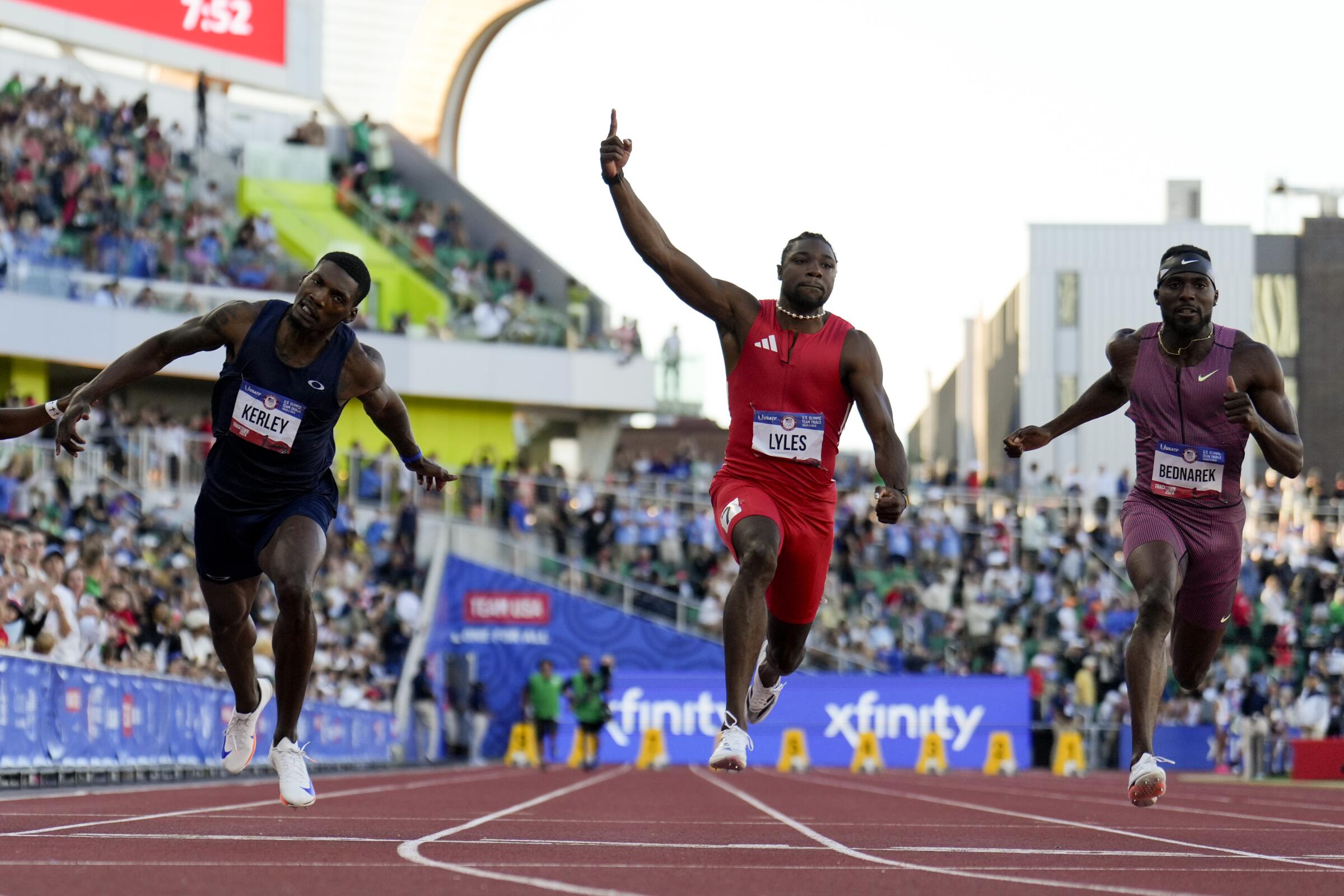History of the US Olympic Trials
The US Olympic Trials hold a profound significance in the annals of American sports, serving as a pivotal platform for selecting the nation’s finest athletes to represent the United States at the Olympic Games. The Trials have evolved over the decades, leaving an indelible mark on the development of Olympic athletes and the pursuit of sporting excellence.
As the U.S. Olympic Trials reach their climax, the spotlight shines on rising stars like Kayla Dicello. Her captivating performances on the track have ignited hopes of a podium finish. Dicello’s determination and resilience embody the spirit of the Trials, where athletes push their limits to represent their nation at the pinnacle of athleticism.
The inaugural US Olympic Trials were held in 1908, coinciding with the establishment of the American Olympic Committee. These early Trials were organized by individual sports federations and served as a means of selecting athletes for the upcoming Olympic Games in London. Over the years, the Trials have undergone numerous changes and refinements, with the Amateur Athletic Union (AAU) assuming control in 1928 and establishing a more centralized and standardized selection process.
Timeline of Major Milestones
- 1908: Inaugural US Olympic Trials held in various locations across the country.
- 1928: Amateur Athletic Union (AAU) takes over the organization of the Trials.
- 1936: Trials held in a single location for the first time, at Randall’s Island Stadium in New York City.
- 1960: Women’s Trials held separately from the men’s for the first time.
- 1972: Trials expanded to include athletes with disabilities.
- 1984: Trials held in Los Angeles, California, in conjunction with the Olympic Games.
- 1996: Trials moved to a new location, the Georgia Dome in Atlanta, Georgia.
- 2012: Trials held in Eugene, Oregon, for the first time.
Impact on Olympic Athletes
The US Olympic Trials have played a pivotal role in the development of American Olympic athletes. The Trials provide a rigorous and competitive environment that challenges athletes to perform at their peak. By competing against the nation’s best, athletes are pushed to their limits and develop the physical and mental toughness necessary to succeed at the Olympic Games.
The US Olympic trials are a time of great excitement and anticipation, but they can also be a time of heartbreak. This year, the trials were marred by the injury to Skye Blakely, one of the most promising young swimmers in the country.
Blakely was injured in a training accident just days before the trials, and her absence was a major blow to the US team. Despite the setback, the US team still managed to qualify for the Olympics in all of the swimming events.
The trials were a reminder that even in the most competitive of sports, there is always room for disappointment. But they were also a reminder of the resilience of the human spirit, and the power of teamwork.
The Trials also serve as a proving ground for young and aspiring athletes. Many future Olympic medalists have made their mark at the Trials, using the event as a springboard to launch their international careers. The Trials provide a unique opportunity for athletes to showcase their talent and earn the recognition of coaches and selectors.
The Process of Qualifying for the US Olympic Trials

Athletes hoping to compete in the US Olympic Trials must meet rigorous qualifying standards. The process of qualifying varies depending on the sport, but all athletes must demonstrate exceptional performance and meet specific criteria.
Qualifying standards are established by each sport’s national governing body. These standards typically include a minimum performance level, such as a time, distance, or score, that athletes must achieve in order to qualify for the Trials.
Different Qualifying Standards for Different Sports
The qualifying standards for different sports vary widely. For example, in track and field, athletes must achieve a certain time or distance in their event in order to qualify. In swimming, athletes must achieve a certain time in their event. In gymnastics, athletes must achieve a certain score in their routine.
Challenges and Obstacles in Qualifying
Qualifying for the US Olympic Trials is a challenging task. Athletes must train diligently and consistently to reach the necessary performance level. They must also overcome a number of obstacles, such as injuries, illness, and competition from other athletes.
Despite the challenges, many athletes are determined to qualify for the US Olympic Trials. For these athletes, the Trials represent an opportunity to compete against the best in the country and to pursue their Olympic dreams.
The Competition at the US Olympic Trials

The US Olympic Trials serve as the ultimate proving ground for the nation’s top track and field athletes, where they vie for the coveted spots on the Olympic team. The Trials are held every four years, just months before the Olympic Games, and they represent the culmination of years of hard work and dedication for the athletes involved.
The format of the Trials varies depending on the event, but generally, athletes must qualify for the Trials by meeting certain performance standards. Once at the Trials, they compete in a series of heats and semifinals, with the top finishers advancing to the finals. The finals are typically held over the course of several days, and the top three finishers in each event earn a spot on the Olympic team.
The level of competition at the Trials is incredibly high, as the athletes who qualify are the best in the country. The rivalries between the athletes are often intense, and the competition can be fierce. The Trials are also a time for great drama, as athletes often rise to the occasion and perform at their best.
There have been many memorable moments in the history of the US Olympic Trials. In 1984, Carl Lewis won four gold medals at the Trials, including the 100-meter dash, 200-meter dash, long jump, and 4×100-meter relay. In 2004, Justin Gatlin won the 100-meter dash at the Trials, becoming the first American to run the 100 meters in under 9.8 seconds. In 2012, Allyson Felix won the 200-meter dash at the Trials, becoming the first American woman to win three Olympic gold medals in track and field.
The US Olympic Trials are a showcase for the best track and field athletes in the country. The competition is fierce, the drama is high, and the moments are unforgettable. The Trials are a must-see for any fan of track and field, and they are a reminder of the incredible talent and dedication of the athletes who represent the United States at the Olympic Games.
Notable Finishes, Us olympic trials
Some of the most memorable finishes in the history of the US Olympic Trials include:
- In 1972, Steve Prefontaine lost the 5,000-meter run to Dave Wottle by a mere one-tenth of a second.
- In 1984, Mary Decker Slaney tripped and fell during the 3,000-meter run, allowing Zola Budd to win the race.
- In 1996, Michael Johnson won the 200-meter dash at the Trials in a world-record time of 19.66 seconds.
- In 2008, Usain Bolt won the 100-meter dash at the Jamaican Olympic Trials in a world-record time of 9.69 seconds.
- In 2012, Allyson Felix won the 200-meter dash at the Trials in a time of 21.69 seconds, the fastest time ever run by an American woman.
These are just a few of the many memorable finishes in the history of the US Olympic Trials. The Trials are a showcase for the best track and field athletes in the country, and they are always full of drama and excitement.